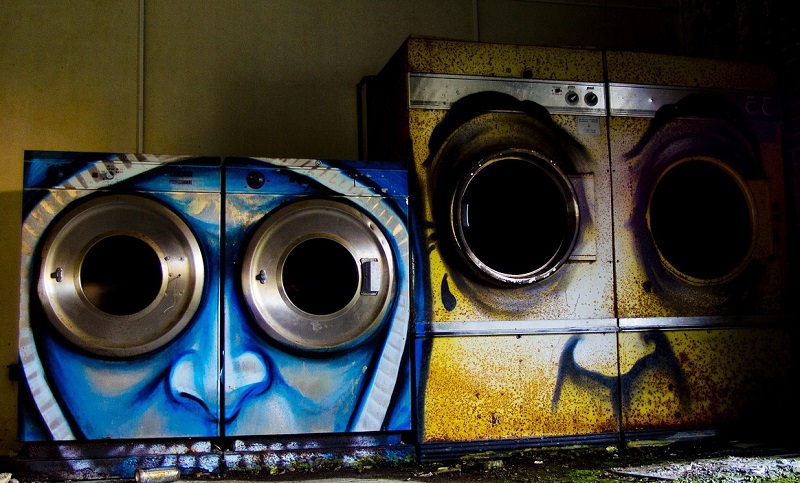
Washing machines are one of the most commonly used household appliances, so when they breakdown it can be a nightmare, and can result in costly repairs. If you’re confident in your DIY abilities, some of the most common washing machine breakdown issues can be resolved without the help of a professional. Some issues occur more than others, so read on to discover how you can resolve these four common washing machine problems.
No water entering the machine
There are a few reasons for why there’s no water entering your washing machine. On most occasions, it’s due to one of the following four things; no faucets are turned on, a clogged filter, a damaged water inlet valve or an unusually slow flow. To sort the faucets issue, all you need to do is pull the machine forward, check the back of it, connect the faucets to the fill hoses and turn them on. You can find your machine’s filter within the water inlet valve at the back of the machine. Disconnect the machine from the mains, then the hoses from the back, and find the filters to unclog.
Perhaps your machine has a damaged inlet valve, so to resolve this you will need to check if the water volume switch is set correctly to ensure that water flows into your machine. Your home’s plumbing issue is likely going to be the cause behind the low flow of water into your machine. This is one issue you may not be able to repair yourself and may require a plumber.
Washer is making unusual noises
If your washing machine is making noises that are concerning you, then the chances are that you’re not loading the washing machine in the correct manner. To ensure that you’re filling your machine correctly, put a half load of washing on and listen out for whether the unusual sounds still occur.
Other loading tips include removing towels from a clothes wash, as when clothes get stuck inside a towel then the water makes the load heavier. A further reason why your machine could be making unusual sounds is that it’s not balanced properly. To resolve this, make sure that all four legs of the machine, if they have them, are all balanced correctly.
Water is leaking
This is a problem that usually occurs during a spin cycle. The most likely reason your washing machine is leaking is that it has a leaky hose. There are many hoses around the washing machine so your first job is to determine which are causing the leak. Check the fill hoses at the back of the machine as these are the ones that carry water from your household into the washing machine. In the same area you can also find the drain hose which could be leaking due to it not being properly connected to the household drainage system. To detect which hose is causing the leak, pull your washing machine away from the wall, and turn on the fill cycle function so you can identify where the water is coming from.
Once you’ve found the issue, turn off your household’s water supply and replace any old or cracked pipes with new ones. This is a straightforward unscrewing job, but they’ll need careful reconnection to the supply lines. If the issue is coming from an interior hose and not an exterior one, then you’re going to have to unscrew the access panel at the back of the machine and pull off the entire cabinet once their clips have been removed.
Do another fill cycle to find which hoses are leaking internally, and on most occasions, you will notice it’s the hose nearest to a broken spring clamp. Remove the spring clamp with hose pliers, and replace it with a new one. Cracked internal hoses will need a straightforward replacement too.
There’s mould in the machine
Mould is a nightmare, especially when you’re trying to wash your clothes as it can stick to them and make them smell. To remove the mould, start by cleaning the gasket on your washing machine with a towel and hot water, to remove it completely from the rubber. Check for mould underneath the rubber too. Then remove the dispensers holding your detergent and check for mould in there. These areas require a lot of work and could even have hard water within it.
Give the inside of the machine as vigorous wipe, before setting the machine to a cleaning cycle on the hottest wash possible. Do not load the washing machine during this process, and if you can still smell the mould, then repeat the process until it’s gone.
If you can’t resolve these issues, then perhaps it’s time to call a washing machine repair man to help. Calling a domestic appliance repairs specialist could be best so they can check the remainder of your household whitegoods.
Natalia xo





